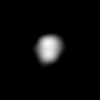
Quartz
Quartz is the second-most-abundant mineral in Earth's continental crust, after feldspar. Its crystal structure is a continuous framework of SiO4silicon–oxygen tetrahedra, with each oxygen being shared between two tetrahedra, giving an overall chemical formula of SiO2.
There are many different varieties of quartz, several of which are semi-precious gemstones. Since antiquity, varieties of quartz have been the most commonly used minerals in the making of jewelry and hardstone carvings, especially in Europe and the Middle East.
Etymology
The word "quartz" is derived from the German word "Quarz" and its Middle High German ancestor "twarc", which probably originated in Slavic, cf. Czech tvrdý ("hard"), Polish twardy ("hard"), Serbian and Croatian tvrd ("hard").
The Ancient Greeks referred to quartz as κρύσταλλος (krustallos) derived from the Ancient Greek κρύος (kruos) meaning "icy cold", because some philosophers (including Theophrastus) apparently believed the mineral to be a form of supercooled ice. Today, the term rock crystal is sometimes used as an alternative name for the purest form of quartz.

Crystal oscillator
A crystal oscillator is an electronic oscillator circuit that uses the mechanical resonance of a vibrating crystal of piezoelectric material to create an electrical signal with a precise frequency. This frequency is commonly used to keep track of time, as in quartz wristwatches, to provide a stable clock signal for digital integrated circuits, and to stabilize frequencies for radio transmitters and receivers. The most common type of piezoelectric resonator used is the quartz crystal, so oscillator circuits incorporating them became known as crystal oscillators, but other piezoelectric materials including polycrystalline ceramics are used in similar circuits.
Quartz crystals are manufactured for frequencies from a few tens of kilohertz to hundreds of megahertz. More than two billion crystals are manufactured annually. Most are used for consumer devices such as wristwatches, clocks, radios, computers, and cellphones. Quartz crystals are also found inside test and measurement equipment, such as counters, signal generators, and oscilloscopes.
Quartz (publication)
Quartz (qz.com) is a global digital-only business news publication. It is owned by Atlantic Media Co., the publisher of The Atlantic, National Journal, and Government Executive. Its team of 150 staff members was pulled together from prominent brands in business journalism: Bloomberg, The Wall Street Journal, The Economist, and The New York Times." The four initial sponsors of Quartz were Boeing, Chevron, Cadillac, and Credit Suisse. Quartz's core market is global business people, with its focus on international markets. Its news articles cover global economy news, ranging from geo-political conflicts to policies and regulations.
History
Name
The name "Quartz" was chosen for various reasons. The name "Quartz" is named after a type of mineral that can be found all over the world and contributed to intense geological activity. The ability of this mineral would then associate with the brand identity, creating new brand's character: global, disruptive and digital. Furthermore, "Quartz" contains two of the rarest letters in English Language, Q and Z, making it a special-looking word. When referring to the Quartz publication website, they took off all the ordinary characters leaving behind qz.com, making it a distinctive website. Also, the fact that there are fewer letters to type into a small mobile keyboard makes it a more user-friendly website.
Belinda
Belinda is a feminine given name of unknown origin, apparently coined from Italian bella, meaning "beautiful". Alternatively it may be derived from the Old High German name Betlinde, which possibly meant "bright serpent" or "bright linden tree".
People
And:
Belinda (film)
Belinda is a 1988 Australian film directed by Pamela Gibbons which stars Deanne Jeffs in the title role. The film was also known as Midnight Dancer.
Plot
Sixteen-year-old Australian girl Belinda (Deanne Jeffs) wants to become a ballerina. To makes ends meet, she takes a job as an exotic dancer in a Sydney cabaret. Eventually, she is able to reach her goal, but not before experiencing humanity at best and worst of times.
Cast
Production
The movie was autobiographical for Pamela Gibbons. It was shot in Sydney August to October 1986.
Awards
References
External links

Belinda (moon)
Belinda (/bᵻˈlɪndə/ bə-LIN-də) is an inner satellite of the planet Uranus. Belinda was discovered from the images taken by Voyager 2 on 13 January 1986 and was given the temporary designation S/1986 U 5. It is named after the heroine of Alexander Pope's The Rape of the Lock. It is also designated Uranus XIV.
Belinda belongs to the Portia group of satellites, which also includes Bianca, Cressida, Desdemona, Portia, Juliet, Cupid, Rosalind and Perdita. These satellites have similar orbits and photometric properties. Other than its orbit, radius of 45 km and geometric albedo of 0.08 virtually nothing is known about it.
The Voyager 2 images show Belinda as an elongated object with its major axis pointing towards Uranus. The moon is very elongated, with its short axis 0.5 ± 0.1 times the long axis. Its surface is grey in color.
See also
References
Explanatory notes
Citations
Sources
Podcasts:

